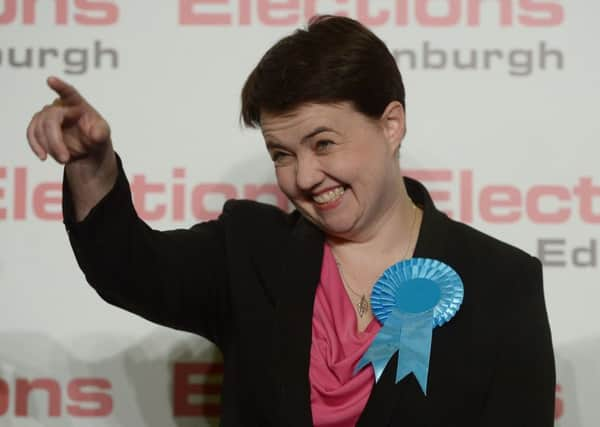It seems a year is a long time in Scottish politics


These dramatic developments have dominated everything and will continue to do so for a long time.
But, while perhaps not having quite the same global impact, there were a few other key events over the past 12 months – not least the re-election of the SNP for a third term in government.
Advertisement
Hide AdAdvertisement
Hide AdThe Scottish Parliament election in May seems an age ago now, especially in the light of world events since, but it was significant for several reasons.
It gave First Minister Nicola Sturgeon her own mandate for the first time. After taking over from Alex Salmond in the wake of the 2014 referendum, Ms Sturgeon was quickly recognised across the UK as a star of the political stage. But leading her party to an election victory gave her an extra authority, even though the SNP lost its overall majority of seats at Holyrood.
The fact the governing party can no longer do whatever it wants has made a difference to the way parliament operates and has been widely welcomed – even by some in the SNP.
The election also saw the Tories overtake Labour as the second biggest party with 31 seats to Labour’s 24.
Advertisement
Hide AdAdvertisement
Hide AdLabour still outpolled the Tories in constituency votes, but the result was a bitter blow to the party which prided itself on delivering devolution and leading the first two devolved administrations.
For the Tories, it was an unexpected coup after their prolonged failure to make any serious comeback from the humiliation of 1997 when they lost all their Scottish seats.
However, commentators said they had only achieved this triumph by “locking the Conservative brand in the attic” and becoming the “Ruth Davidson Party” – appealing to voters on the leader’s promise of strong opposition to the SNP and blocking any idea of a second referendum.
Ms Davidson herself stopped well short of claiming the result as a Tory revival, commenting instead that many people had voted Conservative for the first time and “these are very mobile votes and they can be taken elsewhere pretty quickly”.
Advertisement
Hide AdAdvertisement
Hide AdThe Greens boosted their numbers from two to six, overtaking the five-strong Liberal Democrats. But with no overall SNP majority, both the smaller parties now find themselves with potentially more influence than before.
Edinburgh took its full share of the election’s political drama. Ruth Davidson scored a spectacular personal success on top of her party’s triumph by winning Edinburgh Central against all the odds and even her own expectations.
Alex Cole-Hamilton won Edinburgh Western for the Lib Dems in a hard-fought contest with the SNP. And Daniel Johnson took Edinburgh Southern for Labour, consolidating the party’s hold on the seat which also gives Scotland its only Labour MP.
And the election saw some familiar Capital faces bowing out, including three “originals” who had been in the parliament since the start in 1999. Labour’s Malcolm Chisholm and the SNP’s Kenny MacAskill both retired and Labour’s Sarah Boyack lost her seat.
Advertisement
Hide AdAdvertisement
Hide AdSo even if it is not on the same world-shattering scale as Brexit or Trump, it was an election of big changes which will help shape politics here in Scotland for years to come.